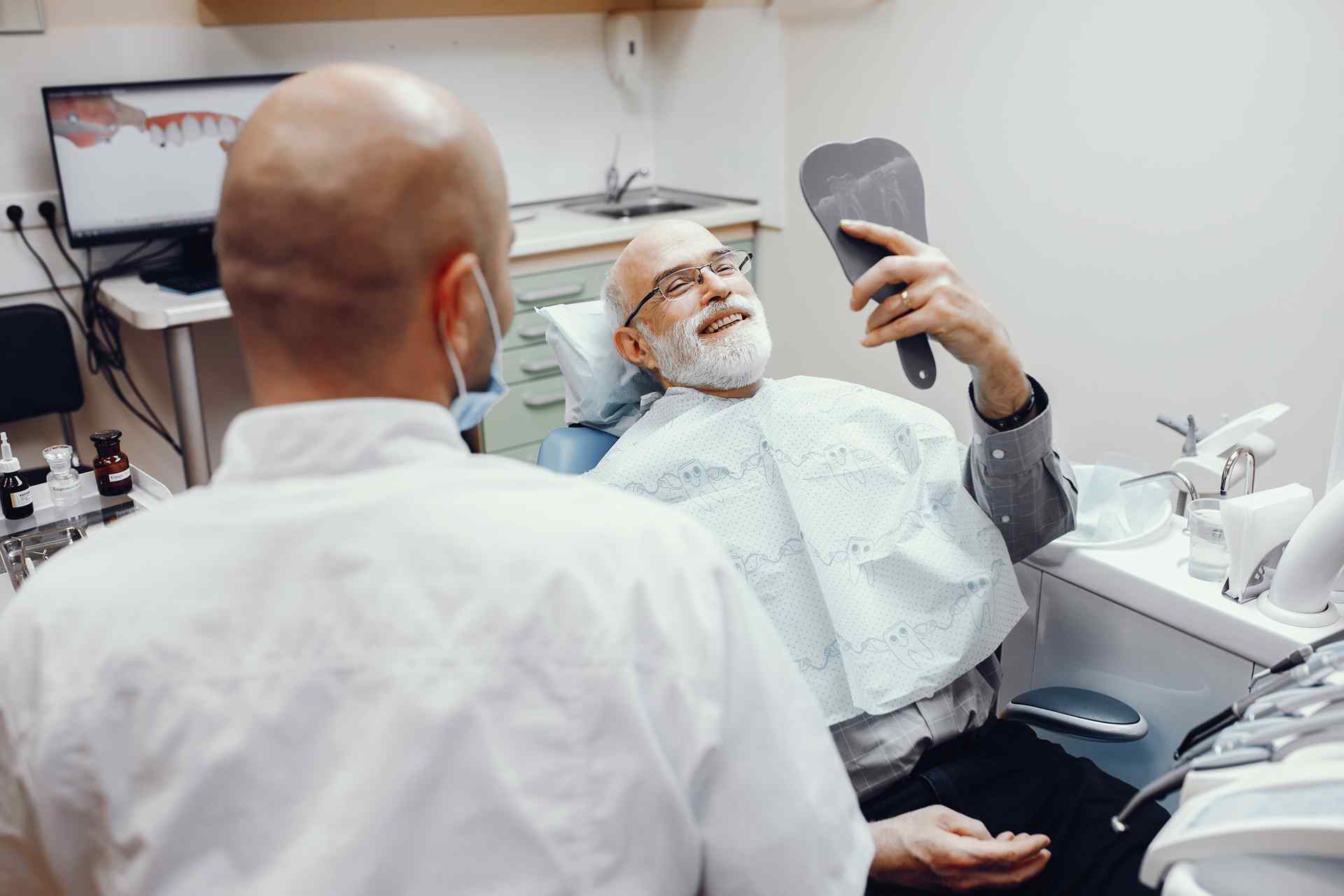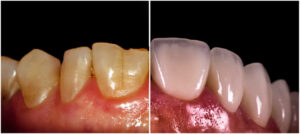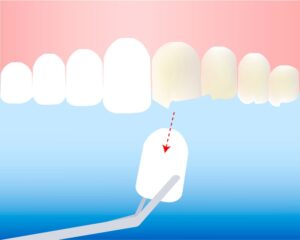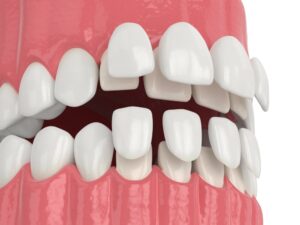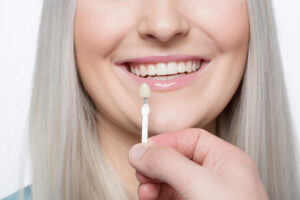Possibly you have been looking for a good comparison of resin veneers vs. porcelain, and you finally got here. It is not surprising that you have inquired about this content since today resin veneers and porcelain veneers are the two main reference points within smile design or any other aesthetic dentistry procedure.
That is why today on our website we have prepared especially for you the most complete comparative analysis you will find on this subject. We will analyze the advantages, disadvantages, duration, prices, and other characteristics of resin veneers and various types of porcelain veneers. Let’s start.
Ready for a stunning smile transformation? Discover unbeatable veneer specials in Miami and take the first step towards your dream smile. Don’t wait, schedule now and seize this limited-time opportunity!
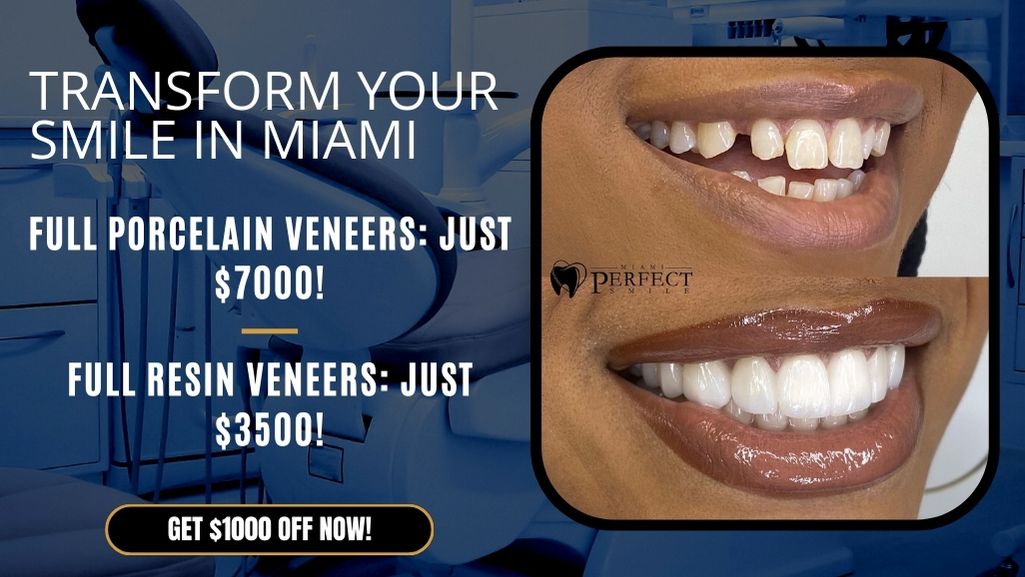
What are dental veneers and what types of veneers exist
Before we get into the comparative details, let’s explain a bit about what veneers are, and briefly talk about the two main types of veneers as of today (resin veneers and porcelain veneers). Keep in mind, and we will look at this in more detail soon, that although resin veneers are of a single type, porcelain veneers are subdivided into 3 types: traditional porcelain, zirconia, and lithium disilicate.
To define dental veneers, it must be said that they are a permanent dental treatment (mainly aesthetic, although it can also be restorative and functional), based on masking the visible or front part of the teeth with sheets of some material that has a very similar appearance to natural tooth enamel.
Dental masking can be carried out with the aim of correcting certain disorders that have partially destroyed the teeth (cavities, previous dental restoration errors, changes in dental color or shape, dental fractures and wear, etc.). However, veneers are also fitted for purely aesthetic purposes, and in reality, this is the most frequent.

Details about the placement of dental veneers
Dental veneers can be placed on one or multiple teeth, as needed. They are a superficial aesthetic procedure, basically a type of veneer that is performed on the teeth. Although they are capable of correcting some functional disorders, such as excessive space between teeth or some bite deviation, dental veneers never fulfill a structural function such as that fulfilled by other dental treatments such as dental implants, prostheses, overdentures, etc.
As dental veneers are charged per unit, the more veneers placed, the higher the price of treatment. When used for restorative or functional purposes, veneers can be placed on one or a few teeth, to correct specific occlusion problems or restore functionality to a tooth that has lost its enamel or never had it (dental hypoplasia).
Instead, when veneers are used for cosmetic purposes, they are usually placed on at least 6 teeth. In these cases, all the upper front teeth are veneered, that is the 4 incisors (the 2 central and the 2 lateral) and the 2 canines (popularly called “fangs”). Veneers are also frequently placed on the teeth immediately behind the 2 canines, that is, the 2 first premolars (1 on each side), which can reach a total of 8 veneers.
If the patient wishes to have what is called a “smile design” ( smile design or smile makeup ), then the 6 or 8 front teeth of the upper jaw can be added to the 6 or 8 front teeth of the maxilla, lower jaw. In this way, the entire front of the mouth is covered by veneers, thus achieving a whiter, Hollywood-style smile. In fact, smile design is also popularly called the “Hollywood smile”, due to the large number of actors who undergo this treatment.

Two main types of dental veneers: resin and porcelain
As we already anticipated in an initial section, dental veneers can be divided into two large groups: resin veneers (also called composite veneers) and porcelain veneers:
1) Resin veneers
Resin veneers, as the name suggests, are made from a combination of resins. These resins are normally made up of a mixture of carbon, glass, and boron fibers, to which some ceramic is added in some cases. This mixture is activated at the moment of applying it to the teeth, and it is also at the moment of putting them on when they are shaped. For this, a carefully pre-designed plan is followed, which is derived from the patient’s expectations and from the bite samples taken in the clinic.
Resin veneers are considerably less expensive than porcelain veneers, but they also last less and are more likely to change color over time as a result of the chemical action of foods and food dyes. When they change color, their presence begins to be noticed on the teeth, so they are considered less aesthetic.
2) Porcelain veneers
Porcelain veneers are manufactured in the laboratory from different types of materials, which are subjected to the same porcelain manufacturing process. There are three or more types of porcelain veneers, depending on the material used for the elaboration, and the qualities obtained:
- Traditional porcelain veneers.
- Zirconium veneers.
- Lithium disilicate veneers.
There are also other porcelain veneers that, although they are named and marketed by a specific brand (Emax, Componeer, and Lumineers, for example), are nonetheless variants of porcelain veneers with relatively different formulas. Once made from molds taken from the patient’s teeth, all porcelain veneers are glued on the respective teeth, for which special and non-toxic adhesives are used.
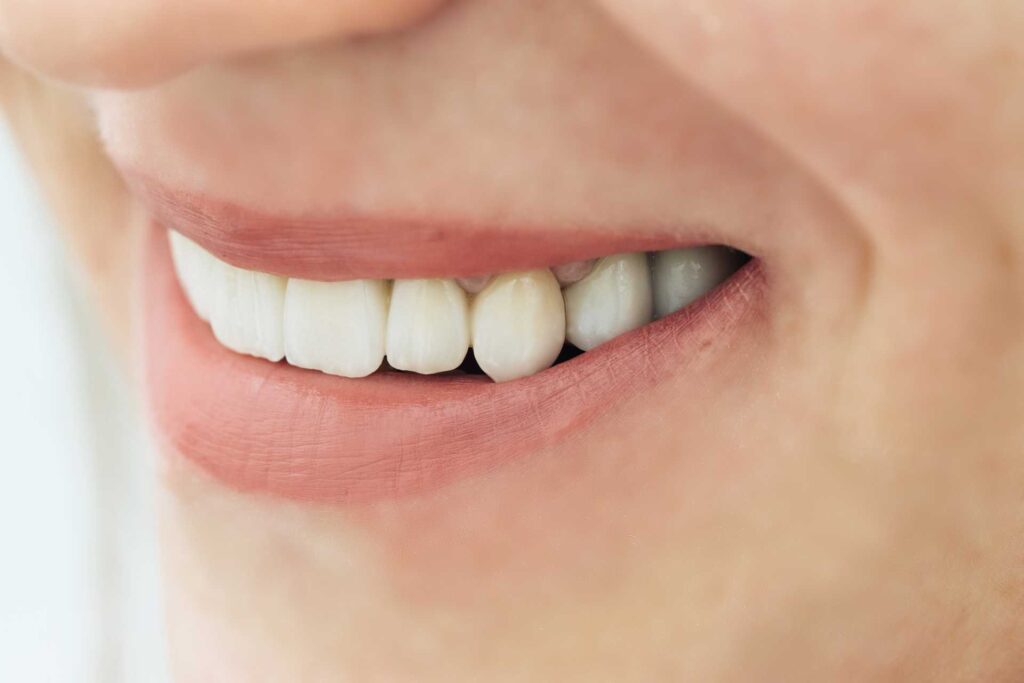
Brief comparative table between the 3 types of porcelain veneers
Actually, porcelain, more than a specific material, is a special way of making ceramics. That is why there are not one, but several, specifically 3 types of porcelain veneers. As we mentioned above, these 3 types of porcelain veneers are traditional porcelain veneers, zirconia veneers, and lithium disilicate veneers. These last two are considered highly aesthetic dental veneers, thanks to their level of finish and their extraordinary durability and resistance. For this reason, they are more expensive than traditional porcelain veneers.
But better let’s briefly examine in the following table the most distinctive characteristics of the 3 types of porcelain veneers, because this will help us to better understand the comparison that we will make between resin and porcelain veneers in a section after this one. If you want to know much more details about porcelain veneers, you can read this article or doctor .
| COMPARATIVE TABLE BETWEEN THE 3 TYPES OF PORCELAIN VENEERS | |||
| CHARACTERISTIC | Traditional porcelain veneers | Zirconium or zirconia veneers | Lithium disilicate veneers |
| Material | They are made from traditional Western porcelain (not to be confused with the famous Chinese porcelain). This porcelain is made up of a mixture of kaolin, feldspar, and quartz. | They are made from a mixture of traditional porcelain with zirconium (also called zirconium or zirconia), a transition metal, to which a minimum percentage of yttrium oxide is added. | They are made from a combination of ceramic and glass with lithium disilicate LS2. They are 3 times more resistant than any other porcelain veneer (resistance between 360 and 400 MPa). |
| Description | They are very similar to natural tooth enamel in terms of consistency and color. | They are translucent, so they take on the color of natural tooth enamel. | They are so thin and resistant at the same time, that it is not necessary to carve the tooth to place them. |
| Price | Between $340 and $450 for each veneer. | Between $565 and $730 for each veneer. | Between $565 and $790 for each veneer. |
| Durability | From 10 to 15 years, or more, if care and hygiene measures are followed. | 20 years or more, provided that care and hygiene measures are followed. | 25 or 30 years, or more, if normal care and hygiene measures are followed. |

Comparative table of resin veneers vs. porcelain
As we respect your time, it seems very appropriate to insert a comparative summary table of resin veneers vs. porcelain, with all the parameters that can be compared between these two types of dental veneers. After the table, you will be able to read some details about the characteristics that we will introduce and comment on in the table, as well as we will give you some important conclusions as a result of this comparison.
| COMPARATIVE TABLE OF RESIN VENEERS VS. PORCELAIN | ||
| CHARACTERISTIC | Resin veneers | Porcelain veneers |
| Price | The cost is approximately $250 for each tooth covered with the resin. | They cost from $340 to $790 for each veneer (the price depends on the type of porcelain veneer). |
| Who is a good candidate to use them (age) | They can be placed in people of any age. If it is necessary to place veneers in children under 7 years of age, these are the most indicated. They are also ideal for patients who do not have natural enamel, or who do not tolerate tooth wear for the placement of porcelain veneers. | They can be placed in people of any age who need to repair dental wear or trauma or perform cosmetic dentistry procedures. But in practice, they are not recommended for people under 18 years of age. Children under 7 years of age (deciduous dentition) are never placed. |
| Main advantages | Their main advantages are their low price and that they almost never require the tooth enamel to be worn down to place them. | Its main advantages are its resistance, its durability, and its appearance practically identical to natural tooth enamel. |
| Main disadvantages | Its main disadvantages are its low durability, its coloration not identical to natural enamel, and its vulnerability to chemical substances and food dyes. | Its main disadvantage is that to put them on you have to wear down the tooth enamel irreversibly. Its high price can be seen as another disadvantage. |
| Aesthetics and conservation | Their color is not identical to natural enamel, and they can usually begin to show when they darken or change color over time or due to the action of food or food dyes. | Its color is almost identical to natural tooth enamel. They do not lose their original shine or darken over time. Those around you do not notice that you are wearing dental veneers, especially if they are highly aesthetic. |
| Manufacturing | They are made with a mixture of resins at the time of placement (although samples of the teeth are previously taken), and they are shaped during placement before the mixture dries. | They are manufactured with porcelain in the laboratory, for which personalized samples of the patient’s teeth are previously taken and a previous design is made according to their expectations. |
| Placement time | The resin is applied to each tooth to be treated, and it must be shaped at the time. If there are several teeth, more than one session at the dental clinic may be needed. | They are placed one by one on the corresponding tooth according to a previous design. This placement, with few exceptions, is done during a single session in the dental clinic. |
| Need to grind teeth | Normally they do not require any type of tooth wear to place them, except for some exceptional cases, in which a minimum of tooth wear is required. | They require some level of tooth wear to look natural. The thinner the veneer, the less tooth wear it will require to place it. Lithium disilicate ones (and some brand-name ones, like Lumineers) do not require tooth wear. |
| Durability | The usual thing is that they last between 5 and 7 years, if the normal care and hygiene measures are followed and if you visit the dentist at least once a year. The most advisable thing is to make 2 annual visits to the dental clinic for revision. | Depending on the type of porcelain veneer, the durability is from 15 years (traditional porcelain) to 30 years (lithium disilicate), if the same care and hygiene measures are followed as for a natural denture. |
| Consistency and adherence | They are not brittle, but the resin does not have the same level of adhesion to the teeth as porcelain veneers. | They are a little more brittle than the resin ones, but if they are not subjected to strong bites, they will not break. Its level of adhesion depends on the quality of the glue. |
| Resistance to aggressive external agents | They are not very resistant to chemical attacks and common substances such as citric acid, alcohol, antibiotics or mouthwashes. | Highly resistant to common substances such as citric acid, alcohol, antibiotics or mouthwashes. They are even more resistant than natural enamel. |
| Comfort level when wearing them | They are normally comfortable. Some patients may feel that they have an addition on the tooth, but others do not experience that strangeness. | They are highly comfortable, to the point that the patient forgets that they are wearing them. But at first they can bother a little due to wear or tooth sensitivity. |
| Biological reactivity and hygiene | Normally its chemical composition does not trigger biological reactions. Its surface retains tartar and plaque to about the same extent as natural tooth enamel. | Its surface is highly smooth and polished, so it does not trigger biological reactions. It tends not to easily retain tartar or plaque, even to a lesser extent than natural tooth enamel. |
| Follow-up after placement | Although they do not require medical follow-up, 1 or 2 annual visits to the dental clinic for check-ups and supervision are recommended. | Normally they do not require any medical follow-up, although it is recommended to visit the dentist according to the normal frequency. |
| Radiopacity (sensitivity to X-rays) | Being made of a somewhat denser material than porcelain veneers, they are less able to allow X-rays to pass through to the tooth. | They have a density very similar to that of natural enamel, so the underlying teeth can be explored with X-rays. |

Conclusions on the comparison of resin veneers vs. porcelain
After so many comparative details between resin and porcelain veneers, it is necessary to answer a question that people frequently ask themselves. The question is as follows: If we compare resin veneers vs. porcelain, which are better? It is not such a difficult question to answer, and in a way we have already answered it during the review. Let’s say that there are certain circumstances in which resin veneers are the most recommended. For example:
- In cases in which minimal aesthetic dental repairs are required, of 1 tooth or 2, for eminently functional reasons and not so much for aesthetic reasons (because they are teeth or molars that are not visible, or because the person simply does not esthetics is paramount).
- In cases of repairs for dental fractures in children under 7 years of age, who still have baby teeth and who will soon have permanent teeth. In those cases where the permanent dentition is about to emerge, it is preferred not to use porcelain veneers.
- In cases where the patient cannot monetarily access the cost of porcelain veneers, but still requires a treatment based on veneers.
However, beyond these cases, resin dental veneers are only the cheapest and most affordable option, with less desirable characteristics than those of porcelain veneers in any of its 3 current variants. Porcelain veneers are generally considered a better option than resin veneers, except for people who prefer not to subject their natural tooth enamel to irreversible wear for cosmetic reasons alone.
Although it is true that from a monetary point of view, resin veneers are usually much cheaper, many people prefer to consider paying for porcelain veneers a good investment, given their advantages in terms of aesthetics, comfort, and durability. This is even more true if we consider that there are dental clinics that grant credits and other payment facilities for porcelain veneers, with the aim of compensating prices.

The most substantial advantage of resin veneers vs. those of porcelain lies in the fact that those of resin, except in rare exceptions, do not require wearing down the natural enamel of the teeth. On the other hand, porcelain veneers (except in the cases of ultra-thin and innovative materials such as lithium disilicate, which are not yet so popular precisely because of their high price), require the wear of up to 30% of the tooth structure, which represents an irreversible loss and possibly implies a commitment to the use of veneers thereafter.
If the person prefers to try the experience of wearing veneers without committing to a permanent change, it is best to try resin veneers first. This is also recommended whenever the teeth to be covered are very few or very small. However, the placement of resin veneers is not recommended for people who smoke or drink coffee, because these substances easily stain the surface of the resin and reduce aesthetics.
In conclusion, porcelain veneers are considered better than resin veneers, thanks to the fact that they are more aesthetic and have a considerably longer lifespan. They are highly resistant to chemicals present in foods, beverages, and solutions that we come into contact with on a daily basis, such as citric acid, alcohol, coffee, antibiotic medications, and mouthwashes, among others. In this way, they maintain their shiny appearance permanently.
